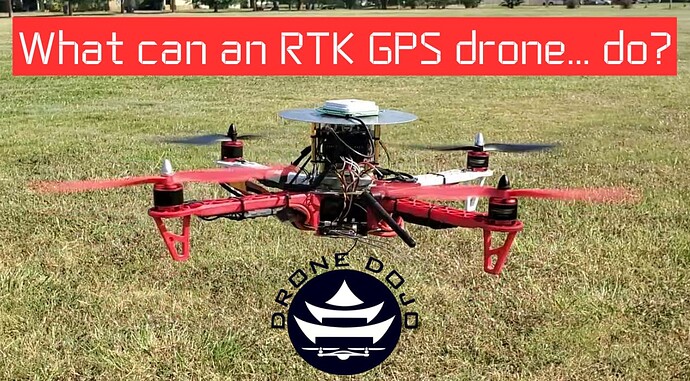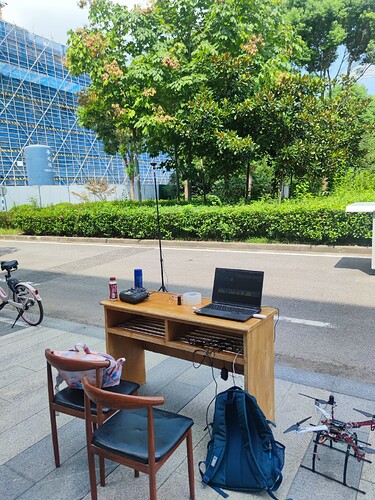Hey everyone! Caleb here.
Just thought I’d share a recent project I’ve been working on. My DIY Drone interests has been pretty much captured by RTK + ArduPilot as of late.
I upgraded a Pixhawk 2.4.8 F450 build with an RTK GPS, namely, the ArduSimple board. Had to use their lightweight antenna to get away with RTK on a drone. This one only weighs 78g!
I have previously conducted precision landing with arucos and vision, but I wanted to test the ability of precision landing with just raw RTK GPS alone.
In the video, I run a simple AUTO mission: fly to a waypoint and return to launch. I manually arm the drone each run, fly it in to the air, and only then hit AUTO mode so that I can place the drone back in the marked waypoint every trial.
This test was done for both the popular non-RTK GPS chip, M8N, and the RTK upgraded F9P. Each setup had 8 runs to get a good average.
I go into further detail in the video, but the takeway is this:
The M8N GPS landed distanced averaged about 52" away from the home waypoint, the RTK GPS landed distanced averaged about 16" away from the home waypoint.
First asterisk on the RTK GPS RTL mission: I had 3 bad lands in a row and I wasn’t monitoring if I had RTK fixed up. Pretty likely it was dropped during these lands since the other 5 were dead accurate. I also had a pretty tight WPNAV_RAD parameter at 10cm and I think this may have aborted the RTL land- since many of my RTLs had the drone hovering over the home waypoint for 2+ minutes. I increased this to 20cm and the problem dead-accurate landing was there.
Second asterisk: I did not tune the drone, and was using stock PIDs for an X-frame. Definitely needed a tune, as I drastically changed the center of mass with my setup.
If you take away those 3 bad lands that I am 95% are due to dropped RTK fixed or too tight of a WPNAV_Radius, the average land is only 8" away from the home waypoint.
With a proper tune, I bet the average landing distance goes down even further.
That’s starting to flirt with conventional precision landing methods in my experience.
Anyways, I go into much more detail in the video, so check that out here
Would love to hear what you all have to say!
–Caleb Bergquist

